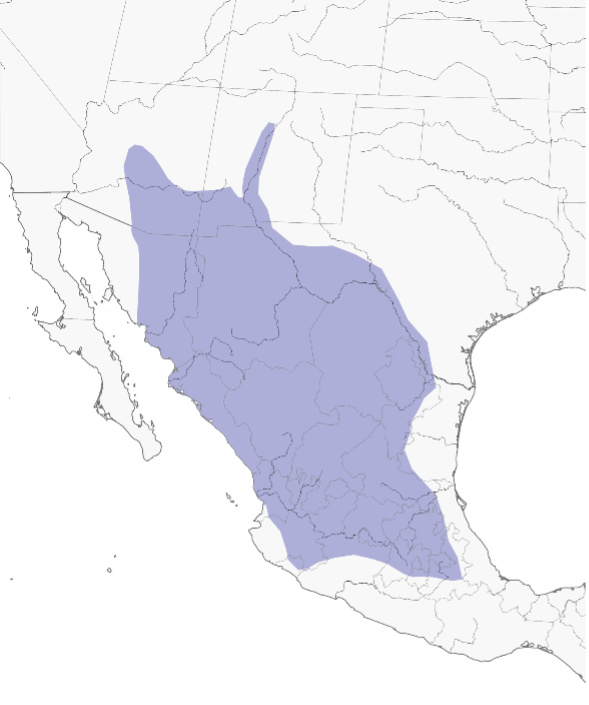Breeding
Around 98% of the Mexican duck population occurs and breeds in Mexico. In the United States, they can be found in southwestern Texas and southern Arizona and New Mexico. Mexican ducks utilize a variety of habitats for breeding, including wetlands, agricultural fields, pastures, and woodlands. Female ducks lay an average of 7 eggs.
Latin: Anas diazi
Average length: 18–22”
Average weight: M 2.3 lbs., F 2 lbs.
Description
Mexican ducks are similar to mallards in size and resemble a mottled duck or female mallard in coloration. Males and females are similar in appearance, although males generally have an olive-green bill while females have orange bills with dark spots. The head is a lighter color than the richly brown body, and the speculum is blueish green. Feet and legs are bright orange.
Food Habits
Mexican ducks have similar diets to mallards, feeding on a variety of plants, seeds, and invertebrates.
Population
The Mexican ducks is one of the most poorly studied waterfowl species in North America. An estimated 55,000–78,000 individuals inhabit the continent and only a small percentage of these occur in the United States. Recent research suggests that the Mexican duck may be expanding its range northward. A close relative of the mottled duck and American black duck, it is a member of the mallard taxonomic complex. The species status of the Mexican duck has been debated for years. In 1967, Mexican ducks were listed as an endangered species in the United States by the U.S. Fish and Wildlife Service due to concerns about low population counts and declining wetlands in the southwestern U.S. Protections were later lost when the species was lumped with mallards due to a perceived high rate of hybridization with mallards. The American Ornithologists Society restored the Mexican duck to full species status in 2020 in response to research that demonstrated they were genetically distinct from mallards.
Migration and Wintering
Although Mexican ducks are non-migratory, they appear to be nomadic in response to precipitation. During dry periods, birds tend to flock around permanent water features, dispersing once the June rainy season makes seasonal nesting habitat available.

